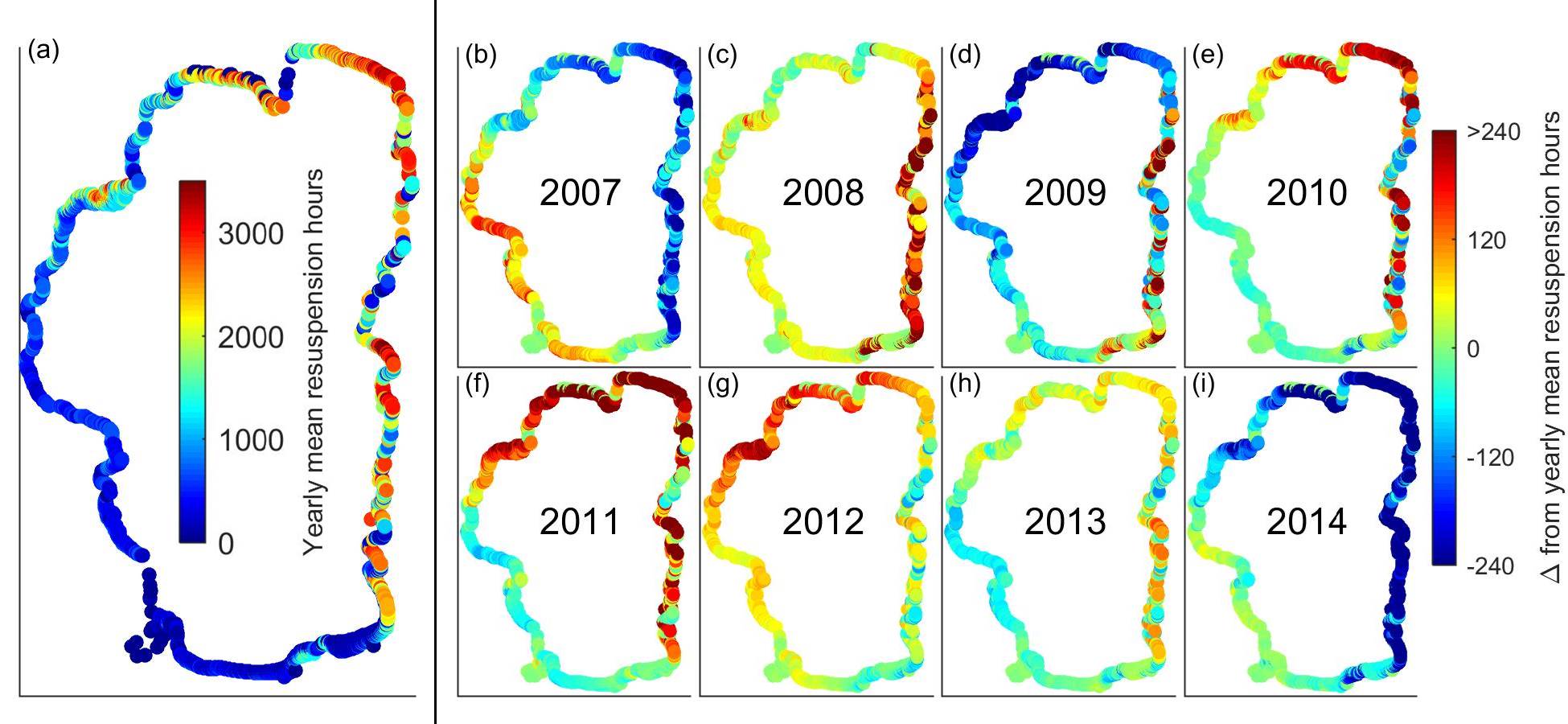Wave Forcing at the Perimeter of Lake Tahoe
Wind-waves play a crucial role in defining the character of the nearshore regions of lakes. Waves can drive sediment resuspension that reintroduces nutrients and particulates into the water column, affecting clarity and ecosystem function. UC Davis Ph.D. student, Derek Roberts, used two years of wave and turbidity data from TERC’s Nearshore Network to validate a tool for reconstructing patterns in wave-driven sediment resuspension at the perimeter of Tahoe. Using this tool, researchers can understand when and where waves are affecting nearshore processes. Karen Atkins, another Ph.D. student, is applying this tool to understand the role that wave action may play in the cycles of attached algae growth and sloughing.
In the figure below, sub-panel (a) shows the average number of hours per year (2007-2014) where waves were large enough to produce resuspension of typical Tahoe sands in the 1-3 meter depth range. Note that the prevailing southwesterly winds drive significantly more wave action on the north and east shores of the lake. The other eight sub-panels (b-i) show differences from those average conditions over eight years, highlighting how shifting wind patterns can shift the effect of waves on clarity and ecosystem processes in different years. Winds were unusually low in 2014, and blew out of the northeast with above-average frequency and magnitude in 2007.


